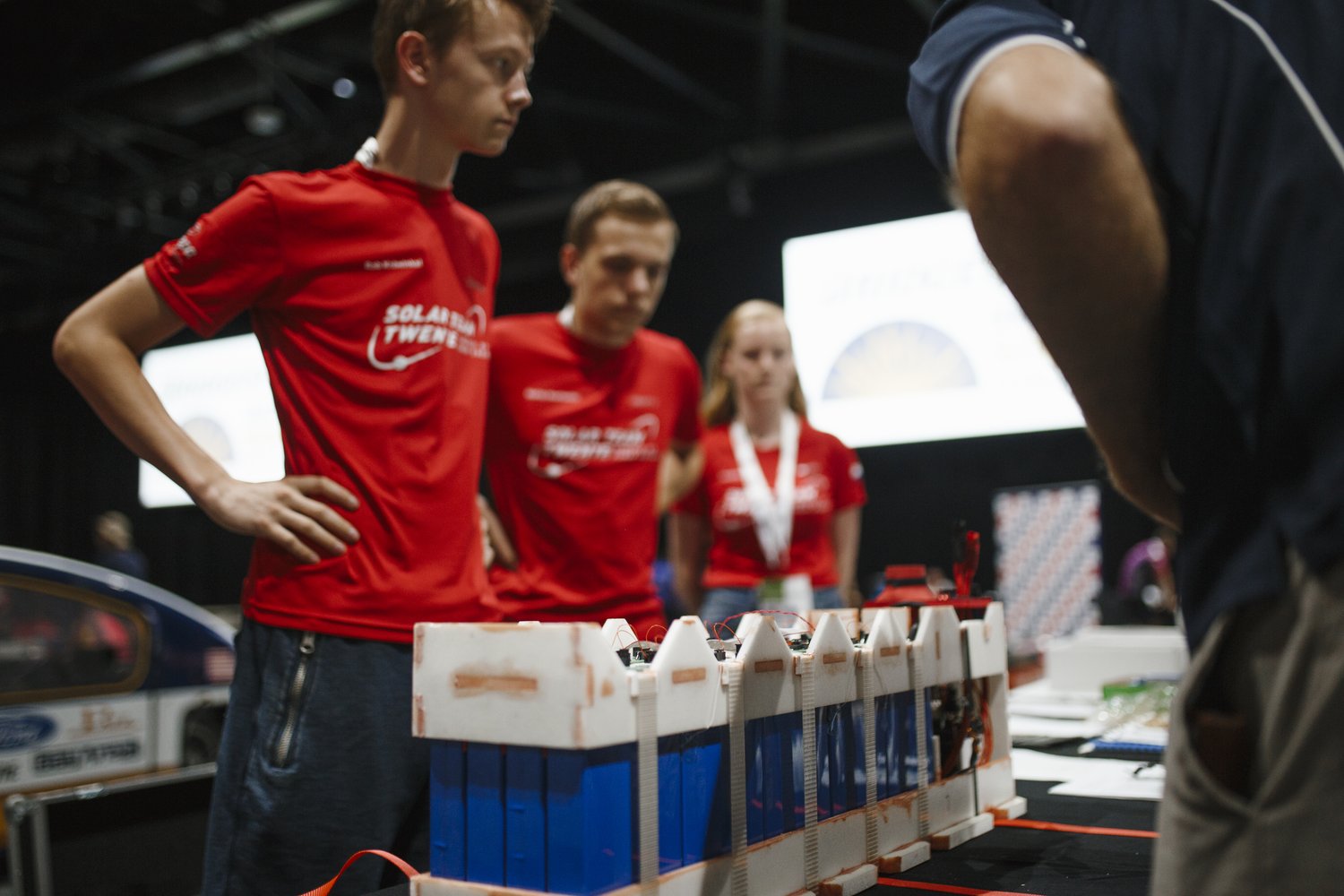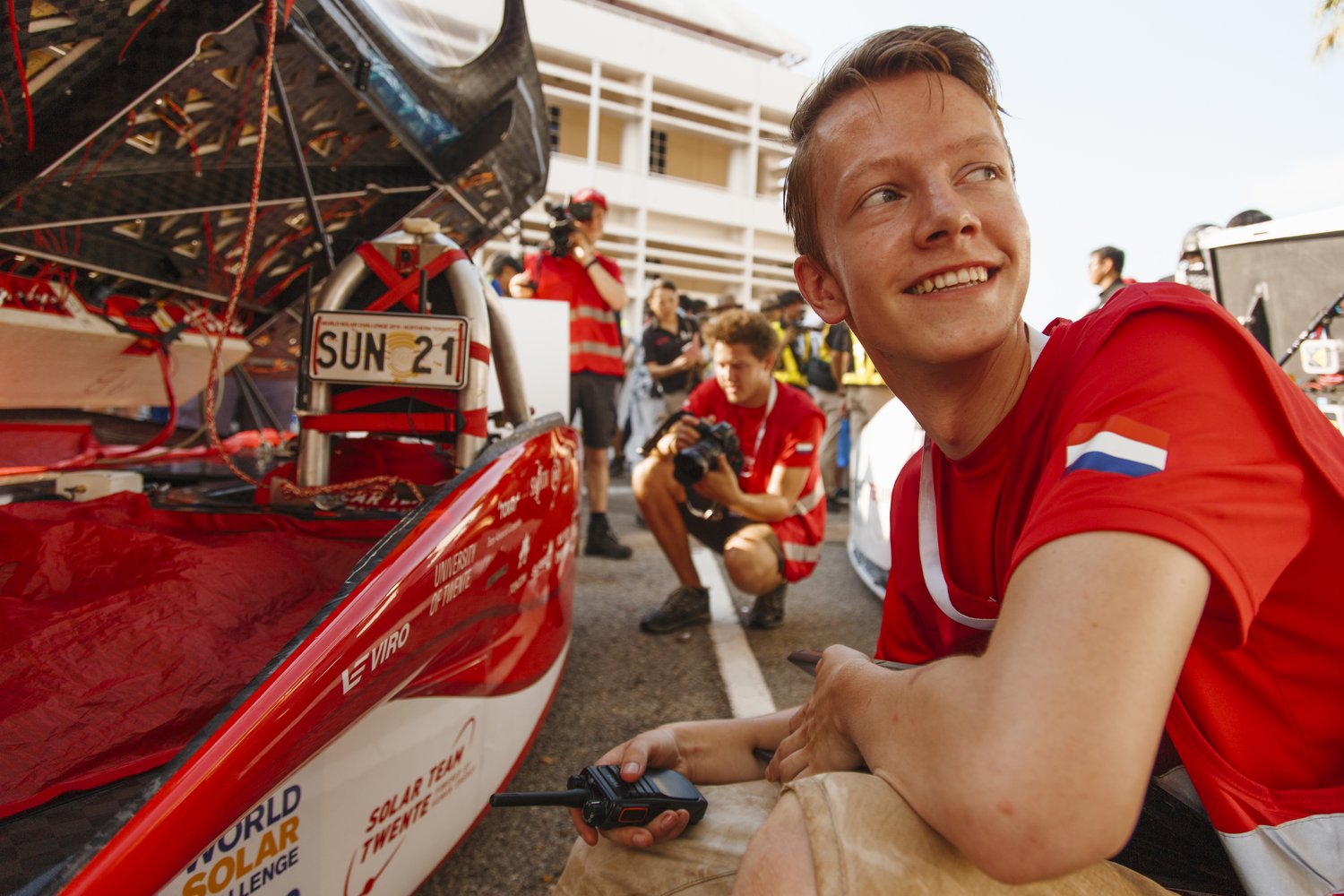Solar Team Twente from an electrical perspective
A solar car is essentially an electric car but powered by the sun instead of the grid. Cars that Solar Team Twente has been building require a lot of electrical know how and skill to realize. One does not simply design a complete car. To get a grasp of what an electrical engineer does on a team like this a single design factor will be discussed. One that has influence on basically the complete design of the electrical system. The high voltage bus voltage.
The goal of the electrical engineers in a team is to gather as much energy as possible and translate that to the forward motion of the car as efficiently as possible. Basically, every component in these cars is self-developed and designed and tested in house. We do this to be able to optimize the design the best to our abilities as we are not restricted by what manufacturers produce. Everything from the solar array to the battery pack to the motor, all components are self-made. This is where the high voltage bus comes in, these 3 components are connected to each other via the HV bus. The motor is a three phase in wheel design powered by a motor inverter to turn the DC voltage from the solar array and the battery pack in to the three-phase power that the motor requires. A change in the HV bus voltage has direct effect on the top speed an electric motor as the used inverter is not a boost converter. The bus voltage meanwhile is defined by the battery pack which can be designed with a multitude of different battery chemistries and configurations. The solar array is connected to the HV bus through MPPTs or maximum power point trackers, these are boost converters.

Inspection of the battery pack during scrutineering, photo by Martina Ketelaar
The battery and the solar array are also restricted in mass and area respectively by the regulations. This affects the possible battery pack and array designs. Assuming a theoretical battery pack in a 30s10p configuration and a maximum of 305 battery cells in the weight limit, a design like this would have 5 cells being unused. Meanwhile a 31s configuration would allow only 9 cells in parallel, leaving 26 cells unused. As the team is always chasing the maximum efficiency in everything, this is obviously not a great design. However, optimizing in one area might introduce extra losses in other areas. Optimizing on the battery pack for example has effect on the solar array. As mentioned, the MPPTs are boost converters, meaning the array voltage should always stay below the battery voltage to allow the tracking to be performed. This way the minimum battery voltage influences the array voltage. The two should be as close together as possible to keep the boost factor low and with it the efficiency high, but the solar cells placed in series should fit on the car as well, not all configurations would physically fit. And the same optimization on the number of solar cells that fit the area limit can be done, as much area as possible should be used.
However, through all this designing and optimization the integration with the car might be the most important. After all, what is the use of a highly optimized solar array if it does not fit on the car or is not angled correctly to the sun. Discussion with other disciplines on the team is very important as a component can rarely be seen as a stand-alone part, it always has some effect on the other disciplines. Even if it just the added mass or required space. This multi-disciplinary cooperation is something that many students learn to master during the project. The gained experience from a team like Solar Team Twente is much broader than just the electrical knowledge. Cooperation, planning, dealing with stress, setbacks and success, communication with large companies and teambuilding are all part of a team like Solar Team Twente. Being part of a highly motivated team that push themselves and the car to the limit in all possible ways is an experience that can only be had in a team like this and something that can not be experienced to the same extent elsewhere.

Rob Kräwinkel (writer of the article) with the solar car at the start of the World Solar Challenge, photo by Martina Ketelaar
If you are interested in applying for the next generation of Solar Team Twente, team 2021, you can send an email to apply@solarteam.nl to stay up to date about all our interest events and the application process. On the 12th of February an information talk will be organized for Scintilla so come by for questions and more information there! Or if there is any EE related question you would like to ask do not hesitate to ask me personally on r.krawinkel@solarteam.nl
Cover photo by Jérôme Wassenaar.
